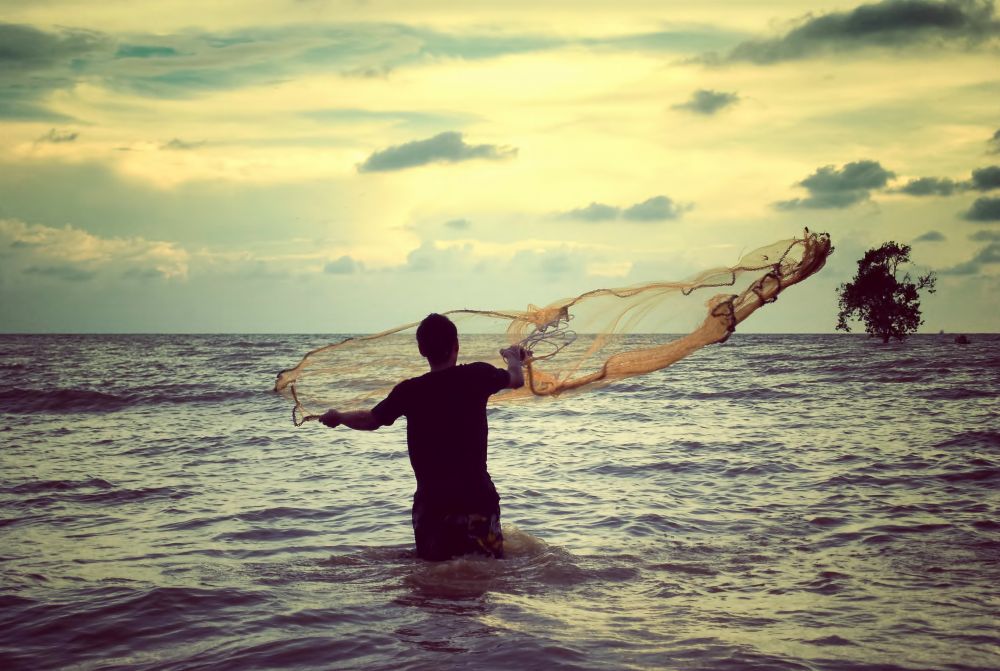
Read the article with FishingTheSpot: throw fishing for royal bream
Keep an eye on this subject!
Thousands of species spotlights and techniques but also all the local information about your city!



Meet other anglers near you and share your fishing fishing trips, afoot or on a boat, at sea or in freshwater
See the fishing tripsThrow fishing for royal bream

Throw Fishing consists in throwing your line offshore or into estuaries, coastal ponds or harbors from rocks or from an artificial structure (dock, dike, hold, jetty...).
In order to fish for sea bream, stable weather remains more appropriate because, despite everything, sea bream do not appreciate turbulence and tend, in bad weather, to find refuge towards the bottom.
A very active species during the day, it is usually one hour after and before sunset that the hits are more frequent!
When it comes to fishing for sea bream, sliding fixtures are the most effective. Indeed, the slightest suspicious tension when taking the bait makes the bream flee. A sliding assembly allows the bream to leave with the hook without feeling any resistance.
As this fish is particularly fearful, a slider lead assembly or the use of stacks above the lead seems to be the most appropriate.
Once you see the tip of the rod moving, if the key is straightforward, you must press immediately, otherwise it is better to wait until the key is confirmed (usually the sea bream drops once, spits out the bait and if it does not detect anything suspicious, returns more frankly). It is therefore necessary to be extremely vigilant at the slightest touch.
Setting and baiting
Setting and baiting of the Arena (or any other worm such as hard, jumbo, bibi, tube worm, American worm):
Lugworm can be used and recovered at low tide under the small serpentine mounds. It can be dug up with a shovel or fork (the fork is less damaging to these fragile animals). Jumbo can also be found on our beaches. For the other worms, it is advisable to buy them directly from fishing shops.
Advantages:
- Very attractive for sea bream
- Fits well on the hook
- Easy to find
Disadvantages:
- Difficult to look for
- Not very selective → you can take plaice, sole, Pollack... or even small bars that you should not hesitate to release.
Between the knots and the lead, it is advisable to put beads to avoid any breakage (lead can rub at the knots and eventually wear the thread).
Baiting:
The worm is threaded all the way through a wormhole needle. The tip of the needle is placed on the tip of the hook and the worm is transferred from the needle to the hook. The worm often has one of its ends at the bottom of the line. This technique has the advantage of not damaging the worm too much and fixing it in such a way that the sea bream sows the entire bait and all of a sudden.
Setting and baiting of soft or hard crab
Soft crabs are excellent for the sea bream. These soft crabs are crabs that are moulting (changing shells). Their appearance is a little whitish. They can be fished by hand under pebbles or in rocks at low tide. Soft crabs are rarer than hard crabs, so be patient when you pick them up. As breams have a powerful jaw that allows them to crush their prey, they can also engulf hard crabs.
Advantages:
- Relatively easy to find
- Very attractive for sea bream
- Fits well on the hook
- Rather selective, few other species will bite (sea bream or sea bass)
Disadvantages:
- Very difficult to find and present on the hook
Baiting
The first is to hook it with a single hook on the hind legs that have been removed beforehand. The crab will keep its mobility and make itself more attractive to predators.
For the second, catch the crab with two hooks, which will limit the risk of stalling during the throw and limit the losses when you hook the fish. With this method, the fish are still more suspicious. One hook will be passed through the belly, which comes out through the back, and the other in the other direction.


